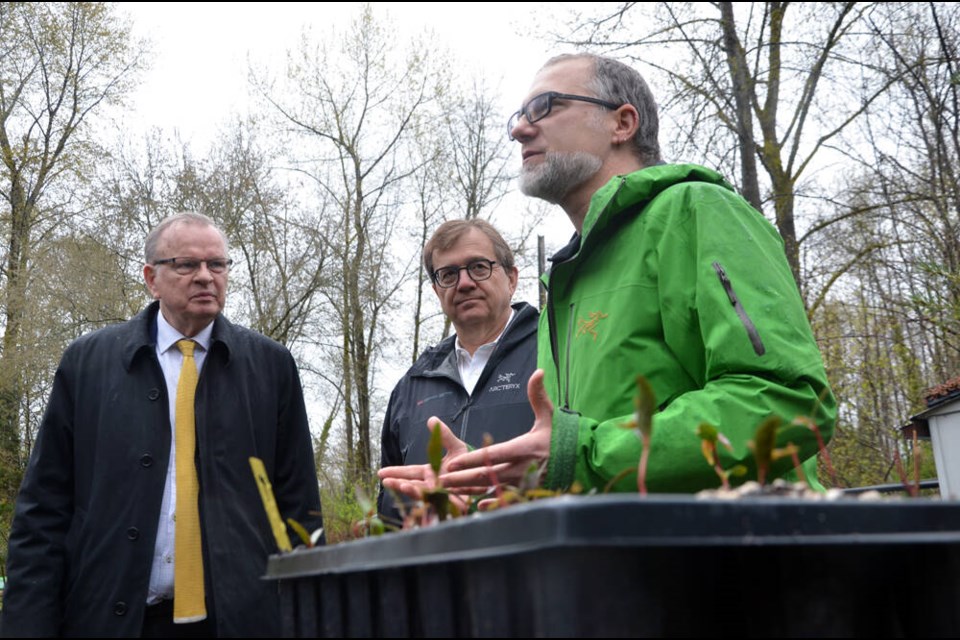B.C.’s canopy is set to become a bit greener in the years ahead as the province and feds have inked an almost $80-million deal to plant 37 million new trees.
It’s the second such agreement under the federal government’s pledge to plant two billion trees across the country over 10 years.
“Nature-based climate solutions – those initiatives that leverage the capabilities of the world around us to help capture and sequester carbon while reinforcing and assisting with biodiversity loss and the restoration of habitat are a critical part of this plan,” said Natural Resources Minister Jonathan Wilkinson, announcing the agreement at North Vancouver’s Maplewood Conservation Area Tuesday. “And there is no greater ally in our fight against climate change than our forests,”
Under the current agreement, which is jointly funded by the province, reforestation efforts will be concentrated in areas ravaged by wildfires and pests in recent years.
By the end of the 2BT program, about 1.1 million hectares of the country will have been replanted with carefully chosen species of trees – about four times the size the area of Metro Vancouver, Wilkinson said.
Once B.C.’s allotment of the two billion trees have been planted, it will sequester 2.1 million tonnes of carbon – the equivalent of removing about 470,000 gas-burning cars off the road for one year, Wilkinson said, adding the program will create about 800 jobs in nurseries and labs as well as in replanting.
Under the 2BT program, 11.3 million trees have already been planted in B.C. said Bruce Ralston, minister of forests, and since 2017, 1.6 billion more trees have been planted through provincial efforts over and above the trees logging companies are required to replant as part of their harvesting agreements with the province.
“There’s a lot of statistics in this because there are a lot of trees being planted,” Ralston said.
A warming climate has fueled wildfires and introduced conditions that allow pests to thrive where they once would have been halted in the winter months, he added.
“This has taken a toll on our landscape, wildlife and forest. It’s almost unimaginable until you actually confront it,” he said. “Reforesting these areas reduces the risk of landslides and floods, while supporting the essential biodiversity and wildlife habitat all British Columbians value.”
Funding for the program was welcomed by the Wild Bird Trust of B.C., which is headquartered at the Maplewood Flats. Tsleil-Waututh Nation Elders, leaders and conservationists were present for the announcement, which was entirely appropriate, said trust president Irwin Oostindie.
“There was a time when the Wild Bird Trust of British Columbia saw our mandate as just dealing with wild birds and now we understand from an Indigenous knowledge perspective that wild birds live in ecosystems and those ecosystems have been stewarded for millennia by local First Nations communities,” he said.
The trust operates a Coast Salish plant nursery at the Dollarton Highway site, which Oostindie said is open to members of the public who want to take climate action in their own yards.
“Here we’re centring our work with native plants and Indigenous knowledge that sees native plants as part of that integrated solution,” he said.
Oostindie took the opportunity to remind the ministers of two other looming threats to birds in B.C. – the Roberts Bank Terminal 2 expansion project, which is now awaiting a federal cabinet approval, and the loss of old growth forests critical to the threatened spotted owl.
“There’s a very real need to implement the old growth review panel’s recommendations on the species at risk legislation,” he said. “The birding committee is really concerned about it. We worked so hard to protect spotted owls that remain a deeply at risk.”



